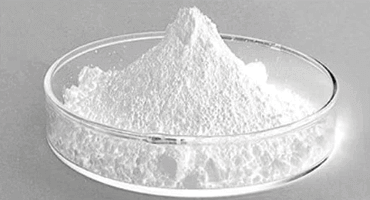Calcium Silicate:
Role: Calcium silicate is used as a reinforcing filler in rubber compounds. It improves tensile strength, tear resistance, and abrasion resistance. It also acts as an anti-settling agent to prevent the settling of other fillers.
Benefits: Improved mechanical properties and reduced compound settling.
Applications: Generally used in high-performance tires and technical rubber products.
Aluminum Silicate (Kaolin):
Role: Aluminum silicate, often referred to as kaolin or China clay, serves as a reinforcing filler, reducing wear and tear, improving tear strength, and promoting good adhesion between rubber and reinforcement materials.
Benefits: Reinforcement, wear resistance, and improved processing characteristics.
Applications: Commonly used in tires, conveyor belts, and other rubber products.
Calcium Carbonate:
Role: Calcium carbonate is a widely used filler to improve the stiffness, dimensional stability, and hardness of rubber compounds. It also contributes to cost reduction.
Benefits: Increased hardness, dimensional stability, and cost-effectiveness.
Applications: Found in various rubber goods, such as shoe soles, gaskets, and automotive components.
China Clay (Kaolin):
Role: Similar to aluminum silicate, China clay functions as a reinforcing filler and helps in improving tear strength and abrasion resistance.
Benefits: Enhanced mechanical properties and reinforcement.
Applications: Used in the manufacturing of tires, rubber hoses, and other technical rubber products.
Whiting Powder (Calcium Carbonate):
Role: Whiting powder, essentially calcium carbonate, is employed to increase stiffness, hardness, and abrasion resistance in rubber compounds.
Benefits: Improved hardness, abrasion resistance, and cost-effectiveness.
Applications: Often used in the production of conveyor belts, footwear, and other industrial rubber products.
Talc Powder:
Role: Talc is a reinforcing and processing aid filler in rubber compounds. It enhances stiffness, heat resistance, and resistance to aging.
Benefits: Improved stiffness, heat resistance, and aging properties.
Applications: Commonly found in electrical insulating materials, automotive components, and sealing materials.
Calcium Oxides:
Role: Calcium oxides are used as acid acceptors in rubber compounds. They help neutralize any acidic components generated during vulcanization, reducing scorch and improving processing.
Benefits: Improved processing and vulcanization control.
Applications: Particularly used in elastomers that generate acids during curing.
These mineral fillers and extenders are often added in specific proportions to rubber compounds to achieve the desired properties while controlling costs. The choice of filler depends on the intended application and the specific performance requirements of the rubber product. Proper compounding and mixing processes are essential to ensure uniform dispersion and effective reinforcement of these minerals in the rubber matrix.




